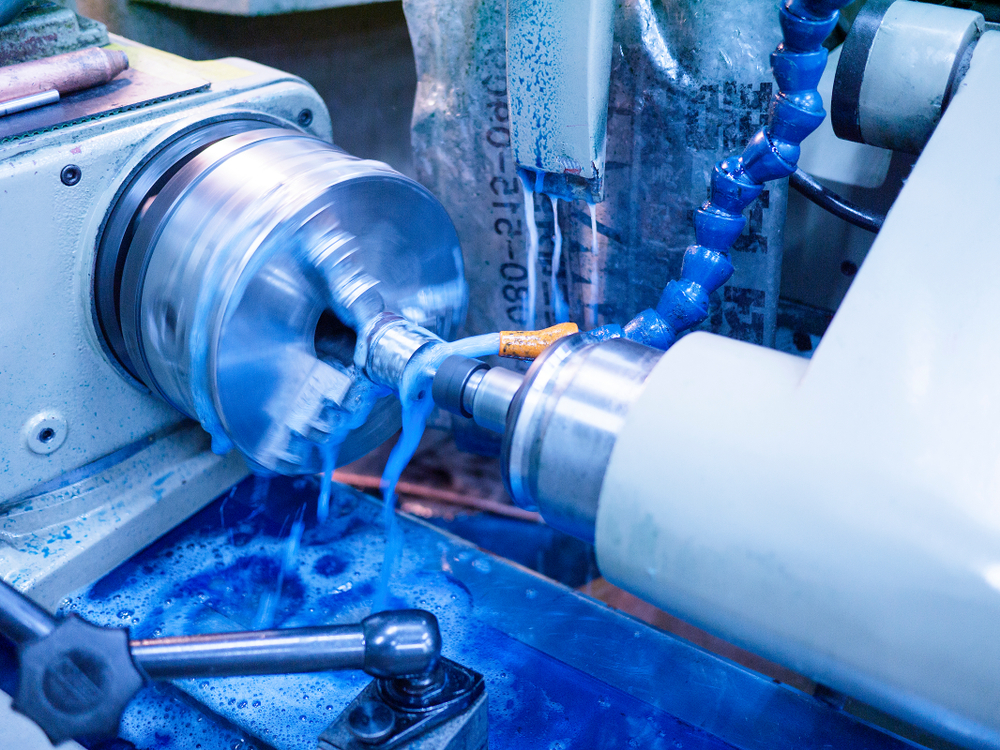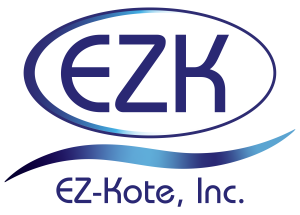
EZ-Kote has been in the water-based mold release industry for more than 40 years. Our chemical engineers continue to innovate with research and development into better chemicals and improved processes.
How do you make mold releases more effective and, therefore, profitable? Find out with our guide.
Traditional Mold Release Agents
Traditional mold releases were made of silicone and worked for non-silicone rubber molds. It worked by transferring a significant amount of the mold release to the part itself, which rarely bonded to the mold. Traditional mold releases required manufacturers to clean each SKU as it came off the line.
When dealing with silicone rubber molds, conventional mold releases are soap. Unfortunately, the high surface tension of soap makes it difficult to release the SKU, causing damage to the end product. Those SKUs are wasted.
Instead, companies must rely on semi-permanent mold release agents (SPRAs) to handle their workloads in modern manufacturing.
Semi-Permanent Mold Release Agents for Enhanced Profitability
The advantages of semi-permanent mold release agents, particularly water-based ones, are numerous.
- Short cure time allows the carrier to evaporate and release polymers to bond with the mold. This prevents the mold release from sticking to the product.
- The bonding is responsible for durability and abrasion resistance, giving you multiple releases compared to other products.
- Cross-linked release film has a low transfer to the part, leading to low build-up on the mold and a lower defect rate.
- Low surface tension gives you the ease of release.
How Do Fluoropolymer SPRAs Work?
Fluoropolymer release agents represent the highest state of the art in our industry at present, although chemical engineers continue to innovate.
- The fluoropolymer creates a clear and colorless chemical bond to the metal surface of the mold. On a clean mold, the SPRA instantly cures to the hot metal mold.
- The mold release is completely inert to the silicone rubber regardless of the Shore A hardness.
- Extremely low surface tension allows a film to form over a Teflon or chrome mold surface, even though both substances are notoriously difficult to bond to a mold release agent.
Five Determining Factors for Choosing a Water-Based Mold Release
Now, we examine the five major factors in choosing your water-based mold release, including profitability.
1. Environmentally Safe
Think about what environmentally safe means. If it’s safe for the environment, it’s also safe for your workers to handle. More and more consumers are concerned about sustainability, eco-friendly practices, and green initiatives. When your company touts its sustainability practices, using a water-based mold release should be a part of that.
Water-based mold release agents from EZ-Kote meet all environmental standards.
2. Ease of Release
The most important factor for a water-based mold release agent is the effortless release without contaminating the mold and minimal transfer to the part. To determine this metric, we look at the breakaway force needed to separate the part from the mold. The greater the force, the higher chances you have of ruining the piece. You can also measure the slip applied to the mold surface.
3. Durability
We determine durability by how long the mold continues to give good releases before it is worn off and needs to be reapplied. Depending on the Shore hardness, EZ-Kote outperforms PTFE by a few orders of magnitude on the number of releases for a silicone rubber surface.
Durability and transfer also have a relationship. Semi-permanent release agents exhibit very low transfer to finished parts. The severity of the wear is determined by the release agent used, the rubber stock being molded, and the molding conditions. To solve any issues, matching the proper release agent to the rubber stock is vital to optimizing the process.
4. Inertness
Fluoropolymers offer better inertness, meaning they don’t interact with the part when possible. If the release agent doesn’t release the part from the mold with a good surface finish, one of the main culprits is a reaction with the elastomer.
A water-based SPRA imparts equal or better cosmetics than the best solvent-based release agents. They even protect the mold from rust, eliminating the need to oil mold in storage.
5. Cost
Here are your hard costs based on process variables regarding a water-based SPRA.
- Number of releases per gallon of SPRA
- Scrap rates (cost of raw materials per part)
- Mold cost (number of molds in production)
- Downtime due to mold fouling and cleaning
- Cycle time (0 cure time for SPRA
- Ease of demolding (parts that do or do not stick to the mold)
- Labor
- Overhead
Keep in mind your labor costs go down with water-based mold releases because you spend less time on the molds themselves, and SPRAs aren’t solvent based with VOCs.
Steady State Process
More reasons you save money with a water-based SPRA come from the steady state process available to you.
- You only reapply the SPRA to keep the ease of release variable within your process parameters.
- All elastomers are quickly released regardless of fillers, co-agents, and curatives.
- 99 to 100 percent yields on all parts regardless of design.
- The cost of SPRA per square foot is much less than solvent-based models.
- Molds stay cleaner up to 40 times longer, lowering your cleaning costs, storage costs, and the number of molds needed to be purchased.
World-Class Water-Based Mold Release Agents
EZ-Kote has more than 30 years of experience with water-based mold releases. Talk to our team about the right formula for your requirements based on your industrial process.
Contact EZ-Kote or call (770) 720-1811 for more details. We’ll respond within 24 hours.
